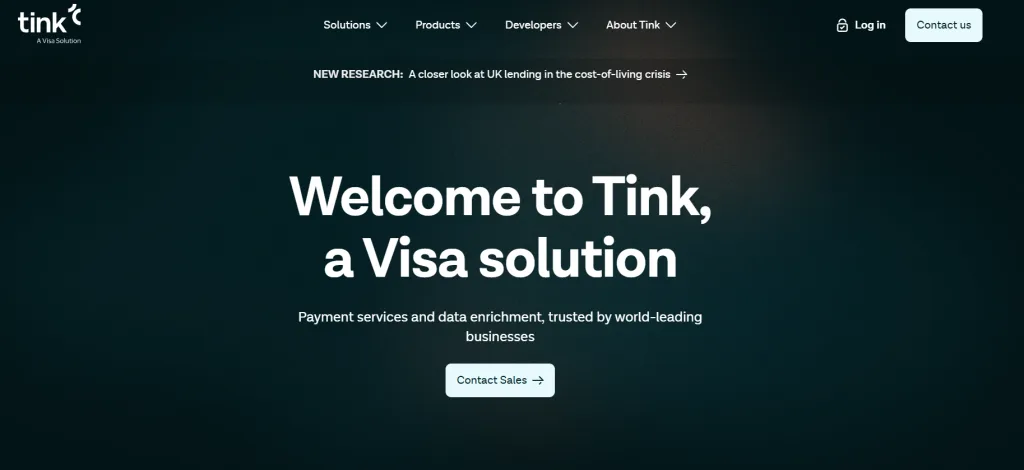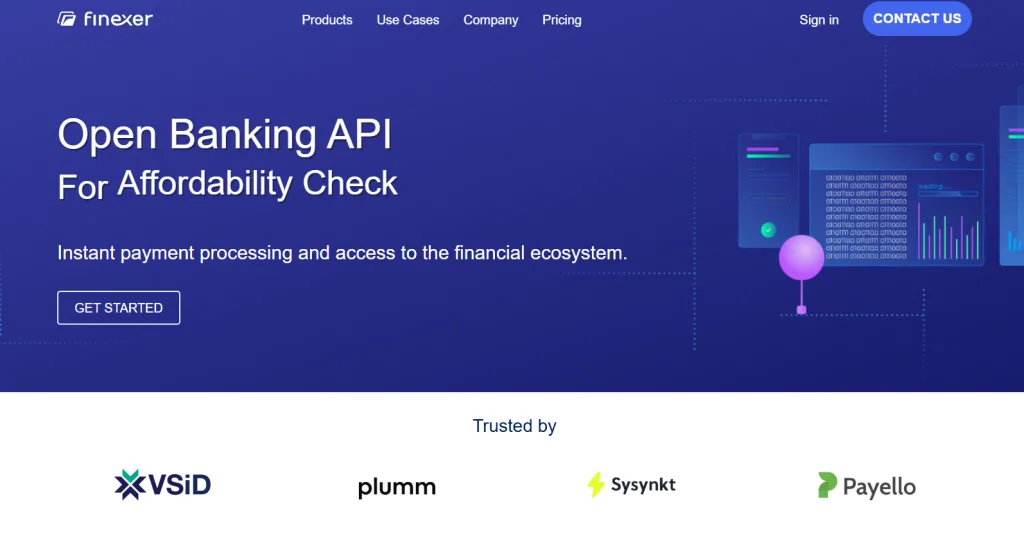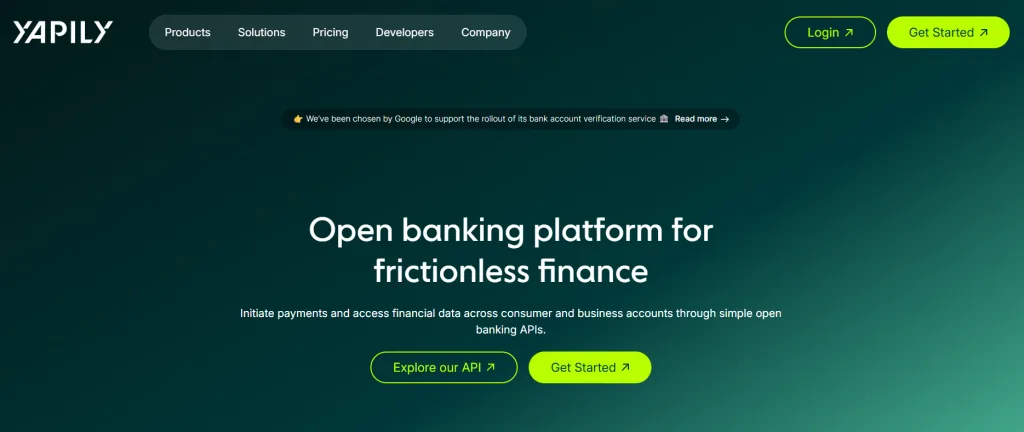In 2025, a popular banking API isn’t just a developer tool — it’s the infrastructure behind nearly every modern financial product. From fintech apps and accounting software to lending platforms and insurer portals, APIs now connect businesses directly to live bank data and real-time payments.
Banking APIs allow systems to:
- retrieve verified account information,
- access several years of transaction history,
- trigger instant payments from customer accounts, and
- handle compliance securely through regulated consent.
The shift is clear: businesses no longer rely on screen-scraping or manual uploads. Instead, they use regulated APIs that provide real-time, consent-based data access, making financial processes faster, safer, and more transparent.
In this guide, we’ll explore some of the most popular banking API examples for 2025, examining why developers, financial institutions, and enterprises rely on them. We’ll also look at how Finexer is shaping the UK’s Open Banking landscape by combining data and payments in one secure platform.
What Makes a Banking API “Popular” in 2025
Not every API earns the title of a popular banking API. The ones that do share a few defining traits that make them trusted by both developers and compliance teams.
1. Extensive Bank Coverage
A strong banking API should connect to as many institutions as possible within its target market. In the UK and EU, that means access to high-street, challenger, and business banks through a single integration.
2. Data Depth and Accuracy
Leading providers deliver several years of verified transaction history per account with consistent, categorised data. Depth and quality matter for audits, affordability checks, and risk assessment.
3. Secure and Compliant Architecture
Every popular banking API follows strict FCA and PSD2 guidelines. That includes encrypted data transfer, OAuth-based consent flows, and auditable access logs for peace of mind.
4. Reliable Performance
Enterprises expect stable connections and low latency during peak loads. Providers that maintain high uptime and fast refresh times are the ones that scale confidently with their clients.
5. Developer Experience
Comprehensive API docs, sandbox environments, and clear SDKs determine how quickly a product team can integrate. APIs that deploy in weeks instead of months become industry favourites.
6. Transparent Pricing and Support
Businesses look for usage-based pricing and hands-on onboarding to avoid surprises. The most popular APIs provide dedicated support from integration to go-live.
Top Banking API Providers Powering Modern Financial Products
1. Plaid

Plaid is often the first name that appears when discussing a popular banking API. Founded in the US and now active across Europe and the UK, it remains a default integration layer for fintechs needing quick, stable access to consumer banking data.
Why Plaid Became a Popular Banking API
Plaid’s rise came from one clear value proposition: connect once, reach thousands of banks.
Its infrastructure links to over 12,000 financial institutions worldwide, with coverage across retail, business, and neobank accounts. That single endpoint approach drastically cut time to market for apps like Robinhood and Wise, setting a benchmark for developer experience in financial connectivity.
Strengths That Keep Plaid on Top
- Developer-first architecture: Detailed API documentation, SDKs for multiple languages, and strong sandbox environments make integration predictable.
- Data reliability at scale: Enterprise-grade uptime and consistent transaction feeds are why major fintechs still build on Plaid despite growing regional competition.
- Modular API suite: Developers can choose between Auth (for account verification), Transactions (for data aggregation), Balance, and Payment Initiation — each accessible under the same secure framework.
- Global trust: PSD2-aligned consent flows and rigorous encryption make Plaid acceptable to compliance teams even in highly regulated markets.
Real-World Use Case
A digital lender using Plaid’s Auth and Balance endpoints can verify borrower account ownership and assess affordability within seconds.
The process replaces manual document upload, reducing fraud exposure and onboarding time for both consumer and business lending products.
Executive Insight
Plaid’s real advantage isn’t just its reach — it’s the maturity of its data model. Its categorisation and enrichment layers have been refined through millions of API calls, giving finance teams cleaner datasets for credit scoring, KYC, and customer analytics.
For enterprises operating across multiple markets, Plaid remains the most internationally scalable option on this list.
2. Tink

Tink, headquartered in Stockholm and now part of Visa, has become one of Europe’s most popular banking API providers by focusing on depth of data and enterprise-grade reliability.
While many APIs claim broad coverage, few match Tink’s precision in delivering clean, standardised financial data across thousands of European institutions.
Why Tink Leads Among Open Banking API Providers
Tink was built for scalability inside regulated environments. It connects to more than 3,400 banks across 30+ European markets, combining Account Information Services (AIS) and Payment Initiation Services (PIS) within one unified API.
Its data enrichment and categorisation capabilities turn raw transaction streams into insights that finance, lending, and accounting platforms can act on immediately.
Core Strengths
- Data Enrichment as Infrastructure: Tink’s categorisation engine helps financial platforms distinguish salary deposits from discretionary spending or recurring bills — invaluable for affordability and risk analysis.
- Regulatory Alignment: Full PSD2 compliance with granular consent management allows seamless integration without introducing compliance overheads.
- Scalable Performance: Used by enterprise brands such as BNP Paribas and ABN AMRO, the platform has proven stability under heavy transaction volumes.
- Visa Backbone: Since its acquisition, Tink benefits from Visa’s security stack and global reach, adding credibility for enterprise procurement.
Use Case in Action
A European lender can use Tink’s Account Aggregation API to instantly retrieve a borrower’s multi-bank history, apply enrichment models to detect disposable income, and execute disbursement through its Payment Initiation API — all within one connection.
This reduces both onboarding friction and the cost of third-party verification services.
Executive Insight
Tink’s strength lies not in being the fastest to integrate but in being the most data-complete.
For enterprises that value analytics, income verification, and customer insight over pure speed, Tink offers a reliable foundation for scaling financial decision-making across the EU and UK.
3. Finexer

Finexer has rapidly become a popular banking API choice among UK firms that need real-time financial data and instant payments under one FCA-regulated platform.
Unlike global aggregators that spread thin across regions, Finexer focuses exclusively on the UK, giving it a distinct edge in coverage, compliance alignment, and speed of integration.
Why Finexer Stands Out in the UK Market
The majority of UK businesses need reliability more than reach. Finexer delivers both through 99 percent UK bank connectivity, including all major retail, challenger, and business institutions.
Its single API stack covers Account Information Service (AIS) and Payment Initiation Service (PIS), letting firms access verified account data, view transaction histories up to seven years, and trigger payments instantly without relying on card networks.
Key Strengths
- Extended Data Visibility: Unlimited transaction fetching gives accounting, lending, and compliance teams full audit and affordability insights across multiple accounts.
- Deployment 2–3× Faster Than Market: Developer-ready documentation, sandbox environments, and guided onboarding shorten integration from months to weeks.
- Usage-Based Pricing: Transparent billing with no setup fees or minimum volume commitments makes Finexer accessible to both scale-ups and enterprises.
- Hands-On Onboarding Support: Each integration includes 3–5 weeks of guided assistance to validate connections, ensure consent flows, and maintain FCA compliance.
- UK-First Compliance: All data sharing operates under PSD2 and Open Banking Implementation Entity (OBIE) standards, ensuring readiness for regulated audits.
Example Use Case
A UK accounting platform using Finexer’s API can automatically import verified bank data for clients, reconcile transactions, and initiate supplier payments — all through consent-based access.
This replaces slow CSV uploads and manual approvals, cutting administrative overhead while maintaining compliance visibility.
Executive Insight
Finexer’s popularity stems from focus, not footprint.
In a market crowded with global APIs chasing expansion, Finexer refines its product for UK banks, UK regulation, and UK developers.
For finance, law, and accounting platforms that operate domestically and value precision over geography, Finexer represents the most pragmatic “popular banking API” built for the UK.
4. Yapily

Yapily has steadily built a reputation as one of Europe’s most popular banking API providers — not through marketing visibility, but through quiet reliability and infrastructure strength.
While many APIs position themselves as plug-and-play fintech tools, Yapily focuses on being the layer underneath the ecosystem, giving regulated firms full control of UX, data handling, and compliance.
Why Yapily Became a Popular Banking API
Yapily’s model resonates with product and compliance teams that prefer to own the customer journey.
Its white-label infrastructure connects to nearly 2,000 financial institutions across 19 European markets, including the UK, enabling both Account Information (AIS) and Payment Initiation (PIS) from a single, regulatory-aligned API.
Where competitors often blend data aggregation with analytics or enrichment layers, Yapily keeps its focus tight: deliver secure, consistent, and highly configurable connectivity that scales with institutional requirements.
Core Strengths
- Infrastructure-First Approach: Yapily avoids branded interfaces, allowing financial platforms to embed its functionality seamlessly within their own products — perfect for firms wanting end-to-end brand ownership.
- Data Reliability and Categorisation: Transaction data is standardised and categorised at the API level, making it immediately usable for reconciliation, lending assessments, or audit workflows.
- Dual AIS + PIS Coverage: With both data access and payment initiation under one framework, platforms can verify accounts and move funds without managing multiple providers.
- Enterprise-Grade Compliance: Yapily’s platform supports granular consent scopes, ISO 27001 certification, and FCA registration, giving legal teams a clear compliance narrative for due diligence reviews.
- Scalability: Used by established players in payroll, wealthtech, and payments, Yapily handles high request volumes with minimal latency and strong uptime SLAs.
Real-World Use Case
A fintech building a multi-country payroll system can use Yapily to pull verified employee bank details (AIS), confirm available balances, and issue salary payments instantly (PIS).
The integration replaces outdated Bacs or SEPA file uploads, giving finance teams full transaction visibility and instant status confirmation.
Executive Insight
Yapily’s strength lies in how quietly indispensable it has become.
For product and compliance leaders, it offers the reassurance of a stable, fully regulated backbone without imposing design or workflow restrictions.
Its developer-centric DNA and focus on infrastructure reliability make Yapily a popular banking API for enterprises that prefer control over convenience — especially those scaling across the UK and EU.
Choosing the Right Banking API for 2025
The race to build smarter financial products no longer hinges on who can code the fastest — it depends on who connects the most securely.
As this list of popular banking API providers shows, the landscape has matured from experimental integrations to production-grade infrastructure trusted by banks, lenders, and fintechs across the UK and Europe.
- Plaid defined the global benchmark for connectivity.
- Tink re-engineered data enrichment into a commercial advantage.
- Finexer redefined the UK standard by uniting complete bank coverage, instant payments, and hands-on deployment support within a single, fully compliant platform.
- Yapily built the invisible infrastructure that powers regulated firms behind the scenes.
For decision-makers, the takeaway is clear: coverage alone isn’t enough.
When evaluating a banking API in 2025, look for regulatory assurance, developer velocity, and pricing transparency — the traits that separate sustainable platforms from short-term experiments
What is a banking API?
A banking API securely connects apps to bank data and payments through regulated consent, allowing instant access to balances, transactions, and account verification.
Which is the most popular banking API in 2025?
Plaid and Tink lead globally, while Finexer is the UK’s preferred popular banking API for complete bank coverage, real-time payments, and FCA-compliant integration.
What makes a banking API popular?
Popular APIs deliver reliable data, broad bank coverage, transparent pricing, and strong developer tools — all within secure, PSD2-compliant architecture.
How is Finexer different from others?
Finexer focuses solely on UK businesses, offering 99% bank connectivity, instant payments, and guided onboarding for faster deployment and compliance.
Book a demo Now and see how fast, compliant, and data-rich your next integration can be!
